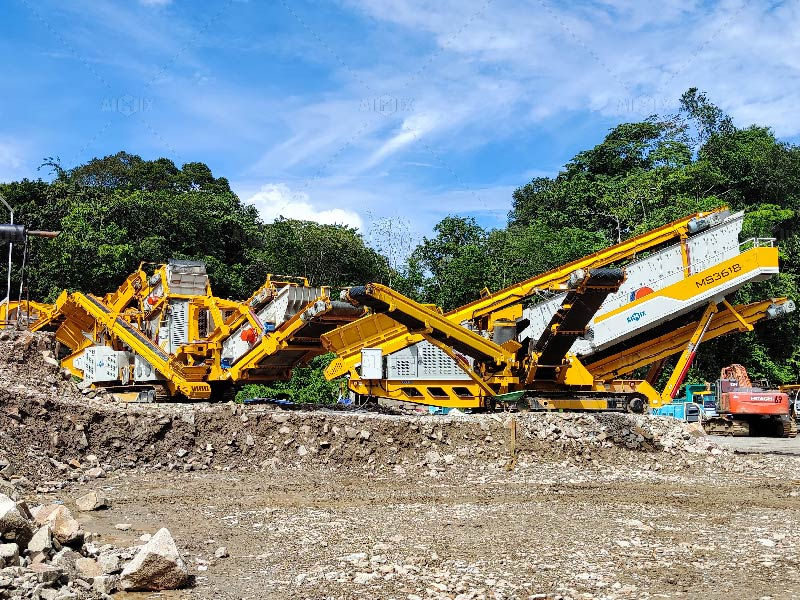The Ultimate Aggregate Crusher Plant Installation Checklist
- info515452
- 2024年10月24日
- 讀畢需時 4 分鐘
When it comes to setting up an aggregate crusher plant, proper installation is critical to ensuring long-term performance and efficiency. Aggregate crusher plants play a vital role in producing the crushed stone, sand, and gravel used in various construction projects. A well-planned installation process can minimize downtime and enhance operational productivity. This comprehensive checklist will guide you through the essential steps to install your aggregate crusher plant(planta trituradora de agregados) correctly.

Pre-Installation Preparation
Before the actual installation begins, thorough preparation is crucial. This includes everything from selecting the right location to gathering necessary tools and equipment.
1. Site Selection and Preparation
Choosing the right location: The aggregate crusher plant should be located in a place that ensures easy access to raw materials and proximity to project sites.
Clearing and leveling the site: Remove any debris or vegetation from the site to create a stable foundation for the plant.
Soil and drainage assessment: Ensure the soil is strong enough to support heavy equipment and check for proper drainage to avoid flooding and operational issues.
2. Gather Required Tools and Equipment
Essential tools: Wrenches, measuring instruments, and lifting tools will be required throughout the installation process.
Safety gear: Ensure all workers have helmets, gloves, steel-toed boots, and high-visibility vests to promote a safe working environment.
Heavy machinery: Cranes and forklifts may be necessary to position large components such as crushers and conveyors.
Installing the Aggregate Crusher Plant
Once your site is prepared, you can move forward with the installation of your aggregate crusher plant of AIMIX Group Co., Ltd China.
3. Foundation Setup
Laying the foundation: A stable and solid foundation is essential for supporting the weight of the aggregate crusher plant. Use reinforced concrete to avoid settling or shifting.
Leveling the base: Ensure the foundation is perfectly level. Uneven surfaces can cause structural instability and may affect crusher performance.
4. Installing the Crusher
Positioning the primary crusher: The primary crusher (such as a jaw crusher or gyratory crusher) must be installed at the appropriate height for optimal material flow.
Bolting and securing the crusher: Ensure all bolts are securely tightened to avoid vibrations or misalignment during operation.
Checking for clearance: Ensure there is enough clearance around the crusher for easy maintenance and repairs. The crusher’s infeed and discharge areas should be free from obstructions.
5. Conveyor System Installation
Assembling conveyors: Set up the conveyor belts to transport material between different stages of crushing. Ensure they are properly aligned and tensioned.
Securing conveyor motors: Attach the motors to the conveyors and test for proper function.
Safety precautions: Install guardrails and emergency stop mechanisms to prevent accidents around the moving belts.
6. Electrical and Power Setup
Wiring the crusher plant: Electrical wiring should be done according to local codes and standards. Connect the motors, conveyors, and any other electrical components to the power supply.
Backup power: Consider installing backup power systems like generators to avoid downtime in case of a power outage.
Testing the electrical system: Before beginning operations, ensure that the entire electrical system is properly grounded and functioning as expected.
7. Dust Control and Environmental Considerations
Installing dust suppression systems: Crushers generate a significant amount of dust, which can affect the surrounding environment and worker health. Install dust suppression systems such as water sprayers or foggers to minimize airborne dust.
Noise reduction: Crushers can also generate a lot of noise. Consider installing sound barriers or noise-reducing equipment if the plant is close to residential areas.
Post-Installation Checks
Once the aggregate crusher plant is fully installed, several checks must be performed to ensure it is ready for operation.
8. Testing the Equipment
Dry runs: Perform several dry runs with no material to ensure that all moving parts, such as belts and conveyors, are aligned and functioning correctly.
Crusher testing: Introduce small amounts of material to the crusher and gradually increase the load. Check for vibrations, noises, and performance issues during this phase.
Adjustments: Make any necessary adjustments to the crusher’s settings or conveyor systems before running the plant at full capacity.
9. Staff Training
Operator training: Ensure that all personnel involved in the operation of the aggregate crusher plant receive proper training on safety protocols, machine handling, and maintenance procedures.
Maintenance team: A trained maintenance team should be available to handle repairs and routine checks to prevent unexpected downtime.
10. Final Inspection and Approval
Inspect the site: After installation, inspect the entire setup to ensure everything is secure and correctly installed.
Get approval: Obtain any necessary approvals from local authorities or project managers before beginning operations.
Conclusion
Proper installation of your aggregate crusher plant is essential for efficient operation and long-term productivity. By following this ultimate installation checklist, you can ensure that your plant is installed correctly, minimizing risks and enhancing the overall performance of your crushing operations. Whether it’s site preparation, securing equipment, or performing final inspections, each step is vital to the success of your project.






留言